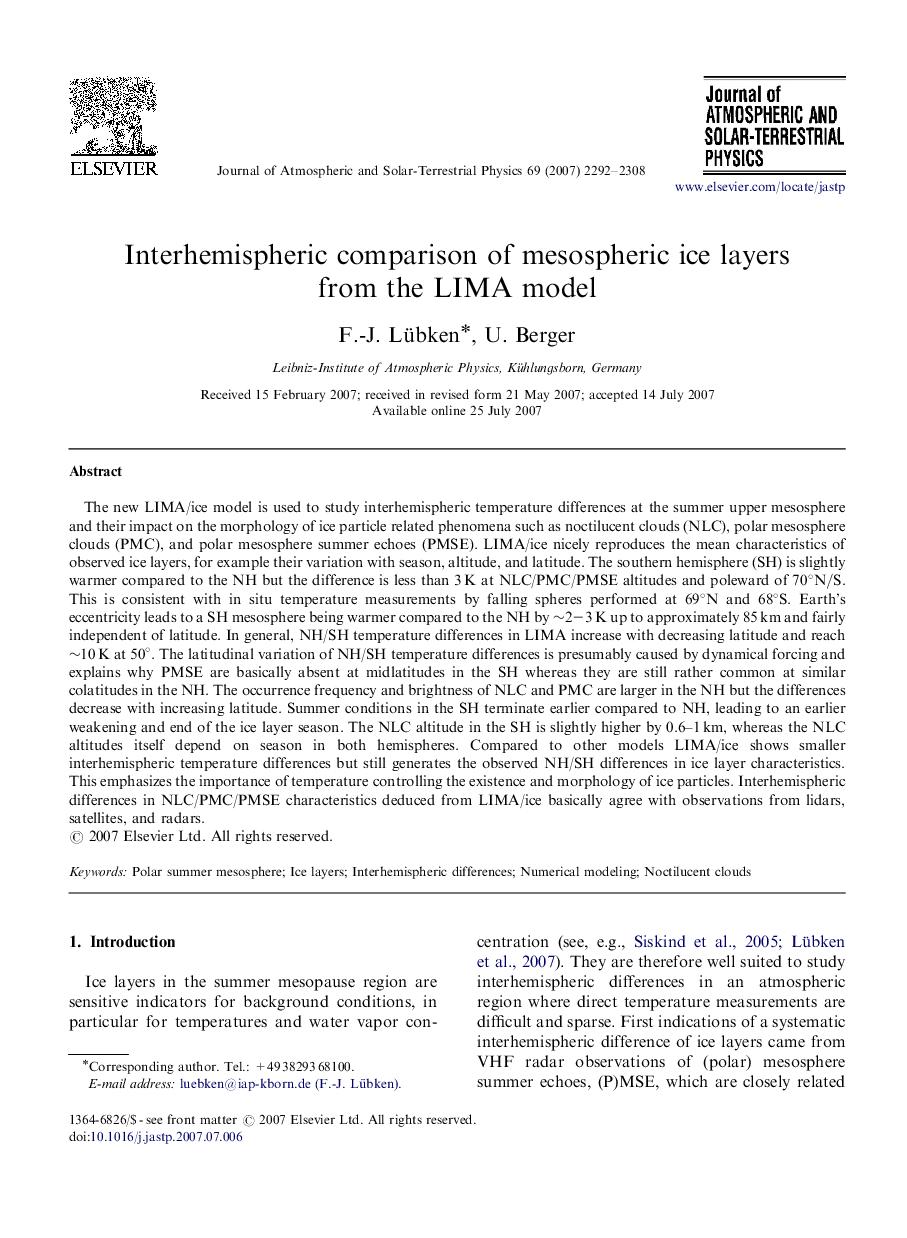| Article ID | Journal | Published Year | Pages | File Type |
|---|---|---|---|---|
| 1777915 | Journal of Atmospheric and Solar-Terrestrial Physics | 2007 | 17 Pages |
The new LIMA/ice model is used to study interhemispheric temperature differences at the summer upper mesosphere and their impact on the morphology of ice particle related phenomena such as noctilucent clouds (NLC), polar mesosphere clouds (PMC), and polar mesosphere summer echoes (PMSE). LIMA/ice nicely reproduces the mean characteristics of observed ice layers, for example their variation with season, altitude, and latitude. The southern hemisphere (SH) is slightly warmer compared to the NH but the difference is less than 3 K at NLC/PMC/PMSE altitudes and poleward of 70∘N/S70∘N/S. This is consistent with in situ temperature measurements by falling spheres performed at 69∘N69∘N and 68∘S68∘S. Earth's eccentricity leads to a SH mesosphere being warmer compared to the NH by ∼2–3K up to approximately 85 km and fairly independent of latitude. In general, NH/SH temperature differences in LIMA increase with decreasing latitude and reach ∼10K at 50∘50∘. The latitudinal variation of NH/SH temperature differences is presumably caused by dynamical forcing and explains why PMSE are basically absent at midlatitudes in the SH whereas they are still rather common at similar colatitudes in the NH. The occurrence frequency and brightness of NLC and PMC are larger in the NH but the differences decrease with increasing latitude. Summer conditions in the SH terminate earlier compared to NH, leading to an earlier weakening and end of the ice layer season. The NLC altitude in the SH is slightly higher by 0.6–1 km, whereas the NLC altitudes itself depend on season in both hemispheres. Compared to other models LIMA/ice shows smaller interhemispheric temperature differences but still generates the observed NH/SH differences in ice layer characteristics. This emphasizes the importance of temperature controlling the existence and morphology of ice particles. Interhemispheric differences in NLC/PMC/PMSE characteristics deduced from LIMA/ice basically agree with observations from lidars, satellites, and radars.
